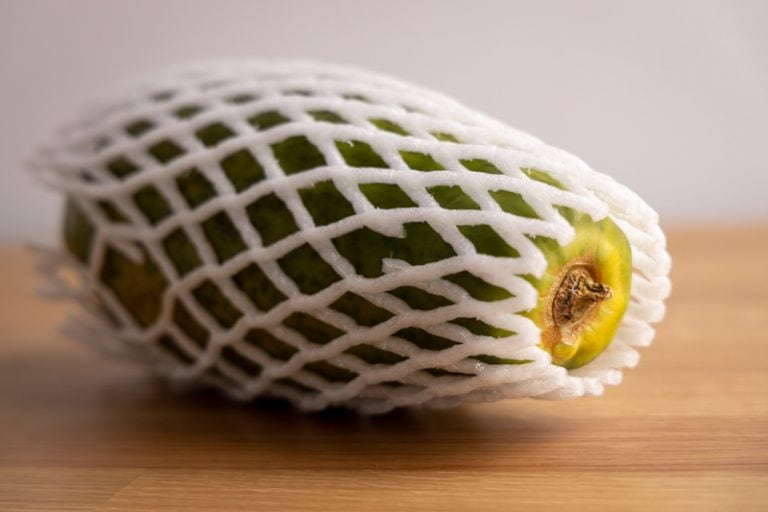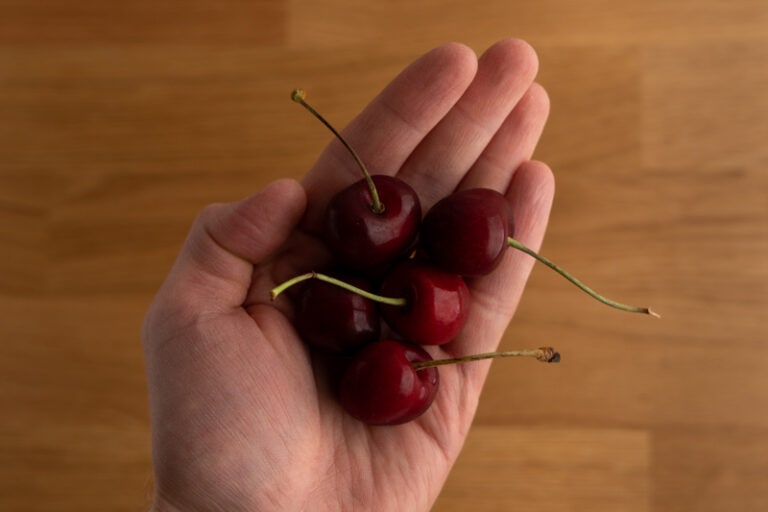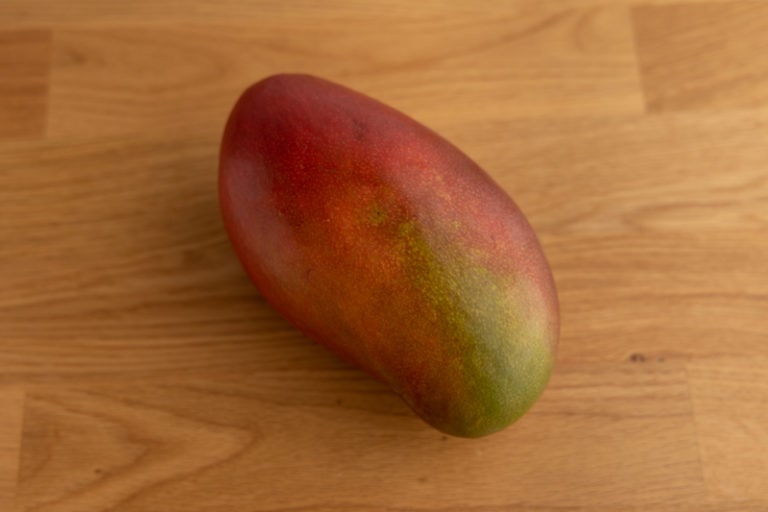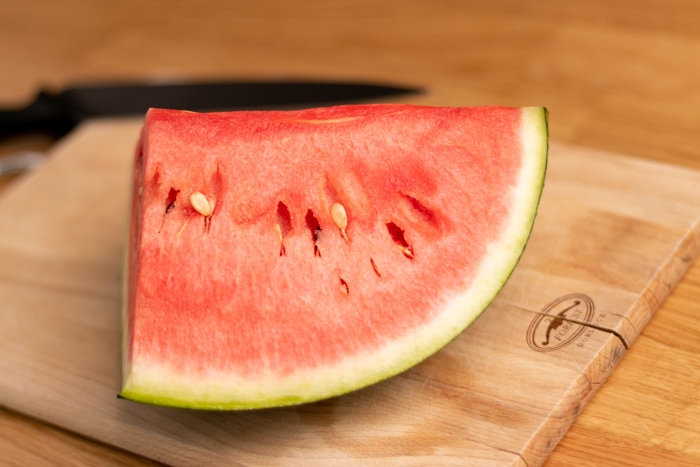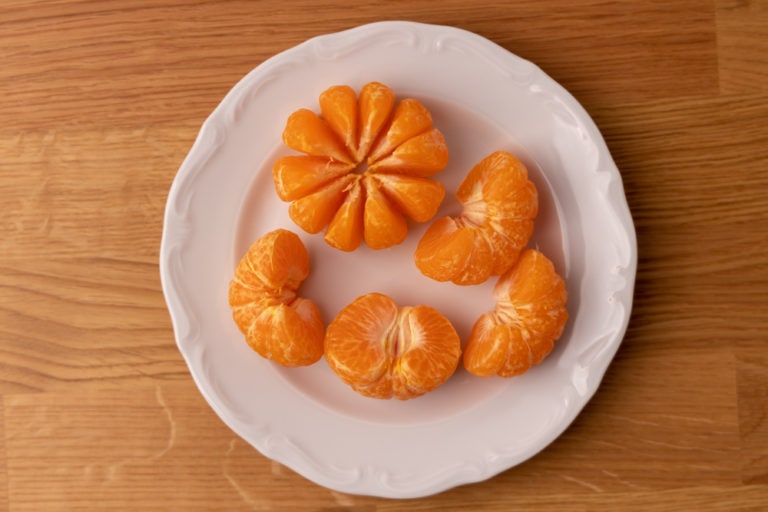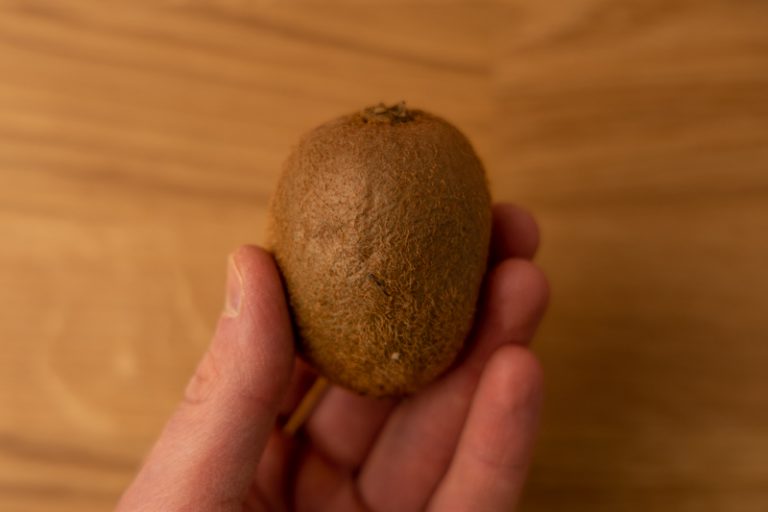Do Olives Go Bad?
While olives are versatile, most recipes call for only a handful of them. That means leftovers.
If you’re not making salads, pasta dishes, or pizza toppings with olives every other day, you might wonder: do olives go bad?
Or maybe you’ve bought one too many can or jar of olives, and you’re unsure what’s the best way to store them for the long term.
Olives aren’t cheap, especially if you choose high-quality ones. Thus it makes sense to be sure if you need to refrigerate them or not, and how to store the leftovers.
If you’d like to learn a bit more about olives, especially about storage, going bad, and shelf life, this article is for you. Read on.
Interested in learning about olive oil instead? Here’s our article that tries to answer the question: “does olive oil go bad?“.
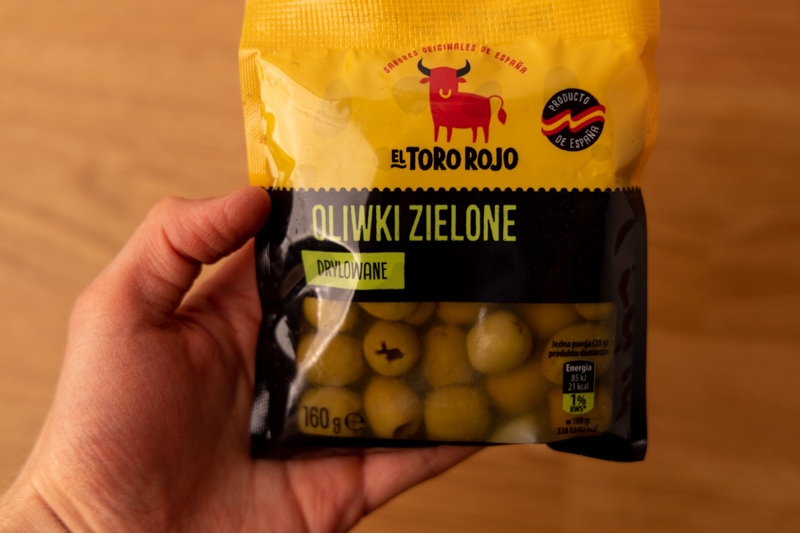
How to Store Olives?
When it comes to olives, there are quite a few varieties available on the market. Besides choosing between green and black olives, you need to choose whether you buy them pitted, with pit, or even stuffed with pimiento or cheese.
But for storage, the most important distinction is how the olives are preserved: in oil or in brine.
You can store an unopened jar or can of olives in the pantry or kitchen. Make sure the area is cool and dry, and that the container doesn’t sit in the sunlight, especially if it’s a glass jar.
Heat and exposure to light might affect olives in a negative way. Because of that, we store them in a way that keeps those factors at bay.
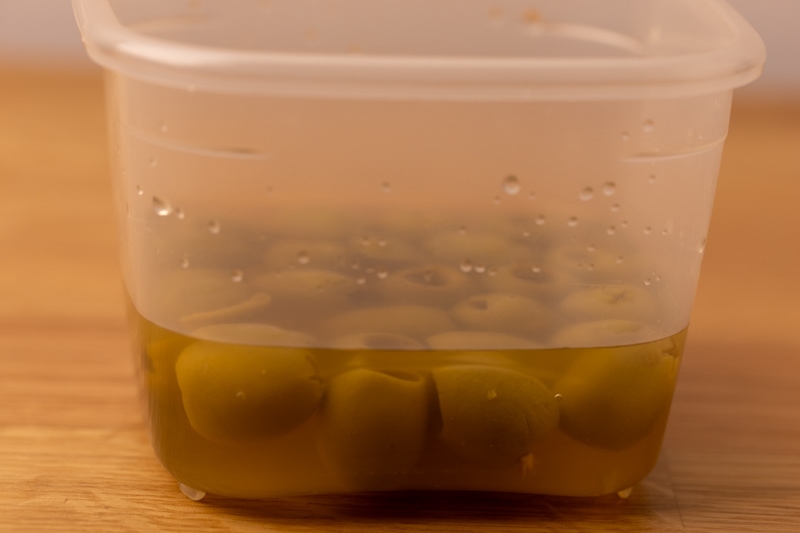
Once you open the container, it’s time to transfer it to the fridge and cover it tightly.
While the jar or bottle is easy to seal, a can isn’t. You can either transfer the olives (with brine) to an airtight container (like I did) or use plastic wrap and a rubber band for a MacGyver-style seal.
Surprisingly, California Ripe Olives suggests covering the top of their cans loosely, instead of going for a tight seal. When in doubt, follow the suggestions on the label.
If you’ve accidentally discarded the brine, not everything is lost. You can easily whip up your own by adding 1/2 teaspoon of salt for each cup of water. Such brine isn’t particularly “strong,” so don’t store the olive in it for more than a couple of weeks.
Remember that the olives should always be submerged in brine.
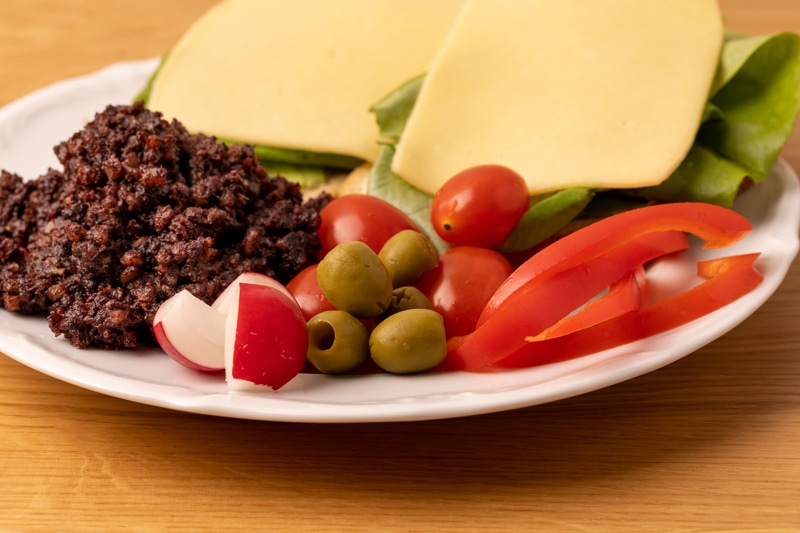
Now let’s talk about olives preserved in oil.
While oil on its own doesn’t particularly mind room temperature, foods preserved in oil are better off refrigerated. So when you get home with that jar, just toss it in the fridge, and you’re good to go.
Once you open the jar, remember to always seal it well before putting back into storage.
How Long Do Olives Last?
When it comes to olives sold in brine, there should be a best-by date on the label. And as you might imagine, the olives don’t spoil or suddenly change the taste a day, a week, or even a month past that date.
Like almost all canned products, as long as the seal is untouched and the jar stored properly, they should be of peak quality for at least a couple of months past that date.
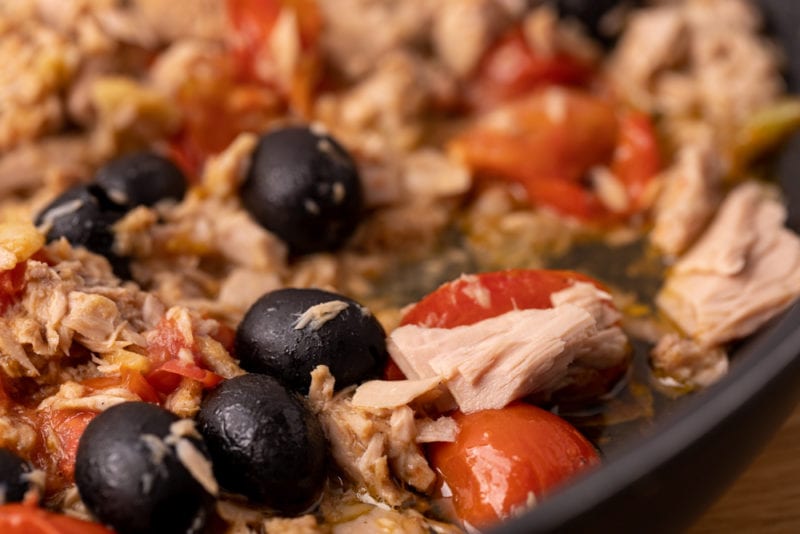
Once you open the jar or can, all hell breaks loose. At least when it comes to shelf life, as the recommendations are all over the place.
Mediterranean Organic suggests that their olives should be consumed within 14 days. California Ripe Olives says it’s 10 days, and the olives I buy inform about 7 days of storage on the label. At the same time, Mezzetta informs that their olives last up to 12 months once opened.
Because of that, it’s kind of difficult to give you a single recommendation.
The differences between the producers’ suggestions are likely caused by the brine. The more salt, or maybe other preservatives, in the brine, the longer the olives should stay fresh.
If you’re looking for a safe period, aim to finish the olives within 3 weeks of opening.
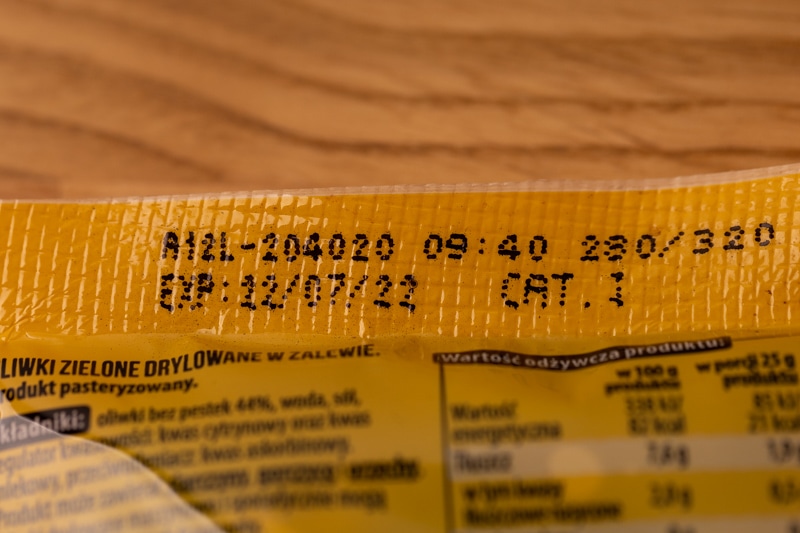
When it comes to olives in oil, things are more straightforward. They also come with a date on the label, but opening the container doesn’t change all that much.
You can assume that the olives in oil should be of the best quality until the date on the label and then probably a couple of weeks more.
Please note, however, that while olives in brine usually have a shelf life of 18 to 24 months, their oil-submerged counterpart has a shelf life of only a few months.
| Pantry | Fridge | |
|---|---|---|
| Olives in brine (unopened) | Best-by + 3 – 6 months | |
| Olives in brine (opened) | 3 weeks | |
| Olives in oil (unopened or opened) | Date on the label + 2 – 4 weeks |
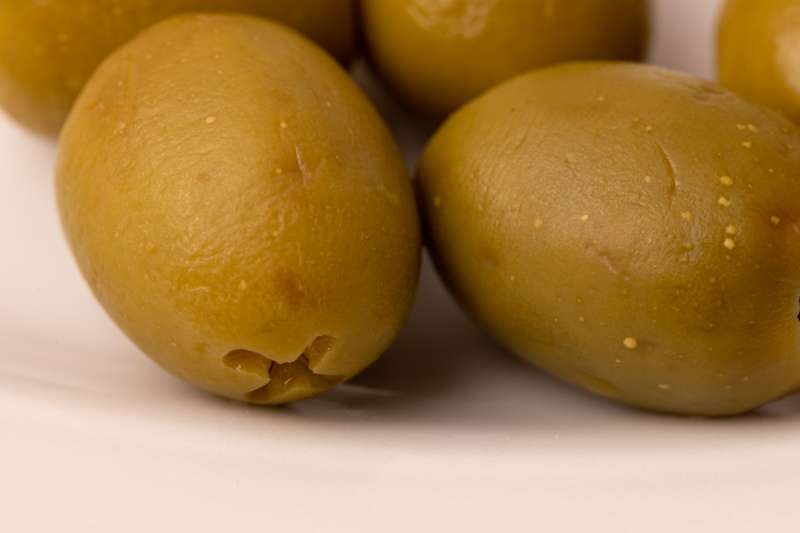
How to Tell If Olives Have Gone Bad?
Let’s start with the container. If it’s still unopened, but it’s rusty, bulging, or leaky, discard it right away. Otherwise, it’s time to open it up and look inside.
Start with the sniff test. If the olives give a funky odor, or the oil smells rancid, throw them out.
Second, consider the appearance. If the olives are in brine and there’s a layer of white mold at the top, Mezzetta says it’s fine to remove it and continue eating.
But if it grosses you out, it’s perfectly fine to discard the olives in such a situation. That’s what I do.
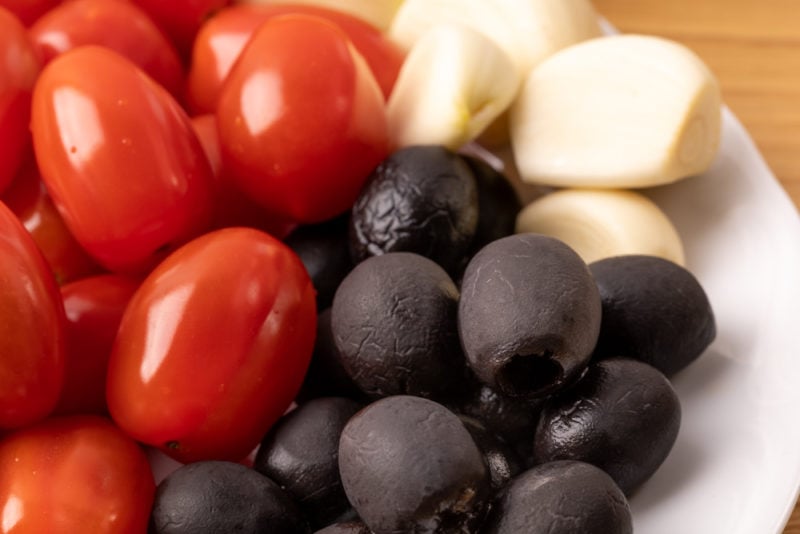
The longer the olives are in brine, the paler their coloring gets. So don’t be alarmed that the olives are slightly discolored after prolonged storage. But if there’s anything else wrong about the olives, keep it safe and get rid of them.
If the olives smell and look perfectly fine, time for the last check: taste.
Based on the flavor you decide if the quality of the olives is good enough for eating (or putting on your pizza or pasta salad), or not. When in doubt, throw it out.
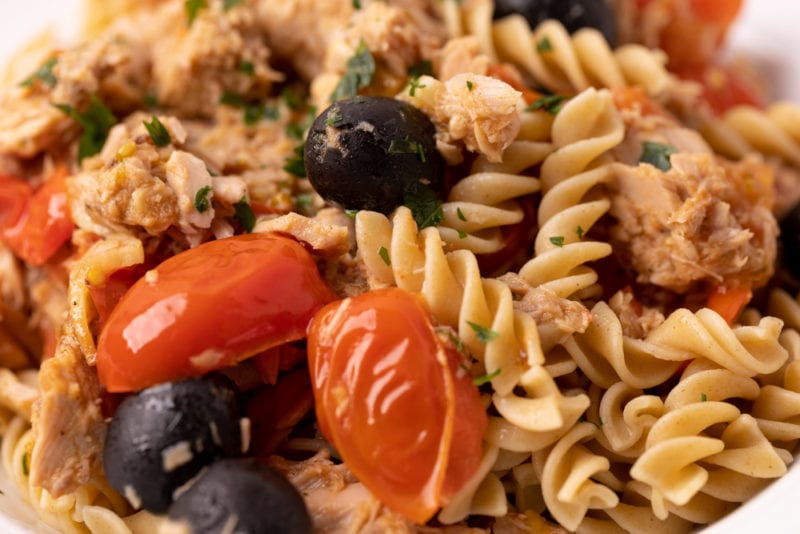
Rotten Records: Share Your Snap!
Caught some food past its prime? Upload your photo to “Rotten Records” and help others spot the signs of spoilage. Every image makes our food community safer and more informed!
